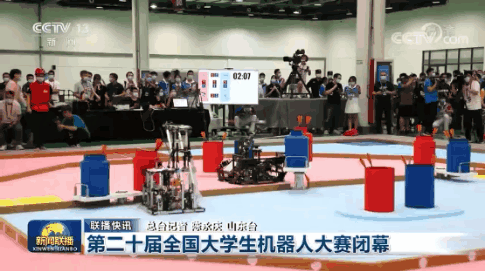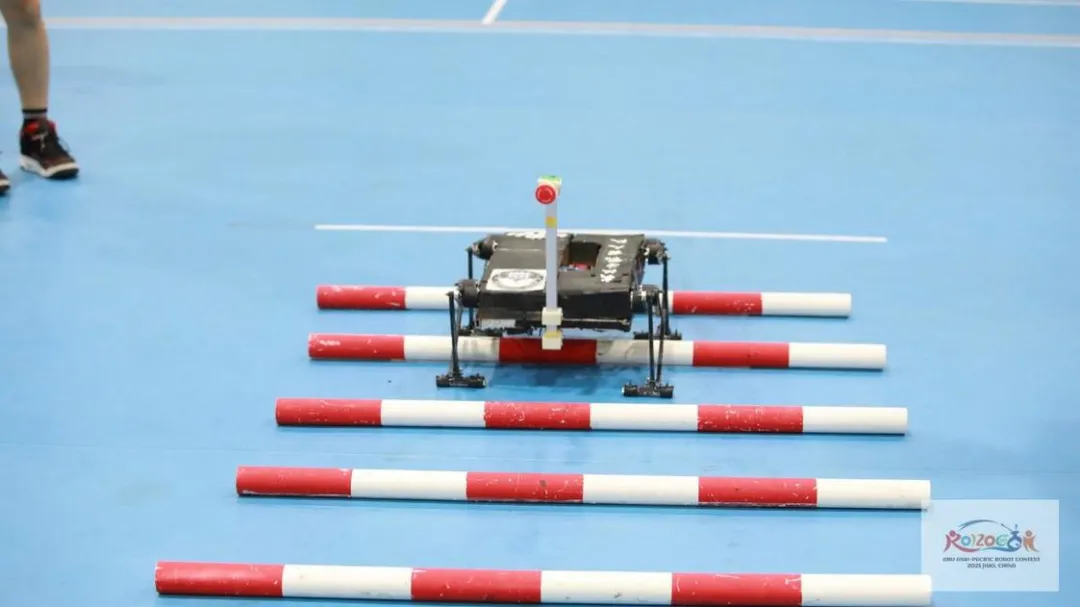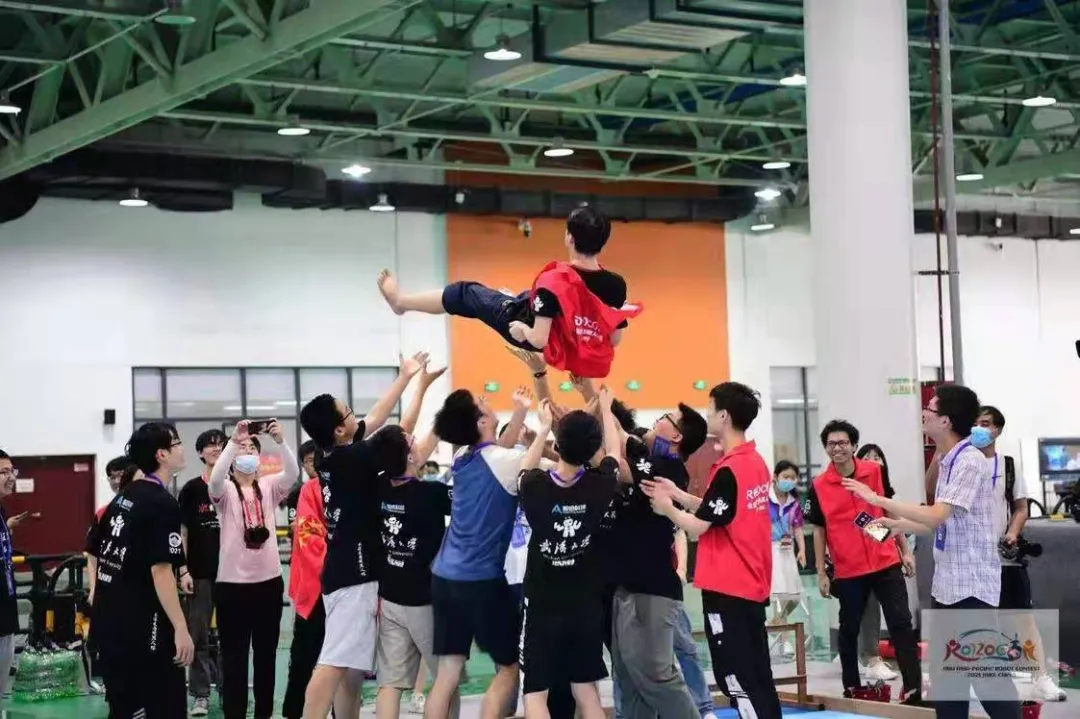When The 20th China University Robot Competition concluded on July 31, the team of Wuhan University (WHU) emerged as the winner of the championship having taken first place in both sub-contests, the Touhu (cast) game and the machine equestrian game, and marking WHU’s first gold medal in the past 20 years.

Group photo of WHU team
Heated battle, nice performance
Unlike previous years, this year’s competition was divided into two games, Touhu and machine equestrian, making it much more challenging.
In the Touhu game, each team was required to design their own robot, manual or automatic, and use it to cast arrows into designated containers. Before the contest, students worked together to build a well-designed robot utilizing their knowledge of engineering drawing, electric circuits, sensor technology and so on. During the game, every team was assigned five buckets. Driven by the internal mechanism and limited to a 12,000mm×12,000mm field, the robot needed to catch arrows in the launching area, and then shoot arrows right into the five containers at a distance.

The Touhu game
Teams from different universities competed in pairs. Once a team became the first to have at least two arrows in each bucket, it won outright. If both sides did not reach the goal, the winner would be the side with more arrows in buckets within 3 minutes.
The WHU team successfully entered the final and beat their strong rivals from the University of Science and Technology Beijing (USTB), topping the medal table with a large margin of 2 to 0. Both rounds in the final took only around 30 seconds for WHU to win outright, marking the best performance among all of this year’s competitors.

Students and teachers cheering for the victory
“The WHU team performed better today, giving full play to efficiency and accuracy”, said Xi Anmin, deputy director of the competition jury as well as a professor of USTB. He explained that WHU excelled at location, calculation and launch with the help of laser, image and mutual signaling between two robots.
The machine equestrian game was based on the combined results of the speed and steeplechase races. The steeplechase included stair-climbing, cobbled road and four other parts. The WHU machine equestrian team was mainly headed by sophomores.

The steeplechase event
“With USTB one of the strongest forces in the past,” said Wang Guoshun, instructor of the WHU robot team, “we ensured full preparation, stayed up all night before the final, and gave it all during the performance.”
Great efforts, first championship
At the news of the first prize going to WHU, Huang Jian, a professor from the School of Power and Mechanical Engineering who has been retired for many years, was overjoyed. He recalled that WHU has kept participating in the competition year after year since its inception in 2002. Instructor Wang shared that, despite good capability, WHU always missed the championship due to lack of technique, luck or other factors. However, things had changed since 2016 when the robotics team introduced new blood and began to pursue a scientific approach. Then the team ranked third in 2019 and second in 2020.
The road to the gold medal was full of setbacks, but the team has never stopped climbing up to the summit. “The students in the team suffer much and study hard, because preparations for the competition consume a huge amount of time and energy, occupying almost all of their spare time,” said Prof. Huang, “As the final date approached, they frequently worked through the night. Sometimes they were too tired to go on and would just lie on the floor or the desks in the testing ground.”

Sleeping after tough work
The tough contest and intense training meant no second was left to waste. The teammates rushed to the workshop early in the morning. They paid much more attention during class to save time for afterschool research. They had no holiday, for that was the only time to put their whole beings into work.
The well-presented project depended on a carefully designed blueprint. Each in the team, a total of nearly 40 persons, was required to hand in their own plan. After repeated discussion and continual improvement, they finally selected the most suitable design. They reflected, retried and innovated. Many new technologies such as LiDAR were put into use.
There have always been new challenges awaiting them every year, and 2021 was no exception. The major problem this year was the launch mechanism. Almost ten thousand experiments were conducted to solve the problem. One whole week was spent on intensive tests on friction pulleys just to make sure every detail would be all right when launching. At the cost of endless nights slotted in the dorm, 1.5 generations were iterated as quickly as possible for debugging based on the original vehicle.
Finally, the WHU robotics team stood on the top podium, enjoying flowers and applauds from all competitors. Li Yunxiang, the team leader, summarized, “A good robot relies on everyone in the team. We play different roles but are worth the same.”

The prize presentation
More possibilities, bright future
Robots are becoming more and more intelligent and advanced as the competition develops. They are equipped with many sensors, such as LiDAR, electronic gyroscope and so on. Such sensors have been widely used in navigation, aerospace, military industries and many other fields.
“These are not taught in class. Students participating in the robotics competition have the chance to learn by themselves. This helps a lot of them develop their abilities,” said Professor Huang, “students with such experience will find themselves very popular with employers or graduate schools.”
Following the competition, the three finalists from WHU, USTB and Beihang University will advance to represent China in the international competition. The WHU teammates are committed to working even harder and aiming higher to compete for the country.

The vibrant team marching for the world stage
Photo by Wang Guoshun, Li Yunxiang & The robot team of WHU
Rewritten by Li Sijie
Edited by Qin Zehao, Yin Xiaoxue.


